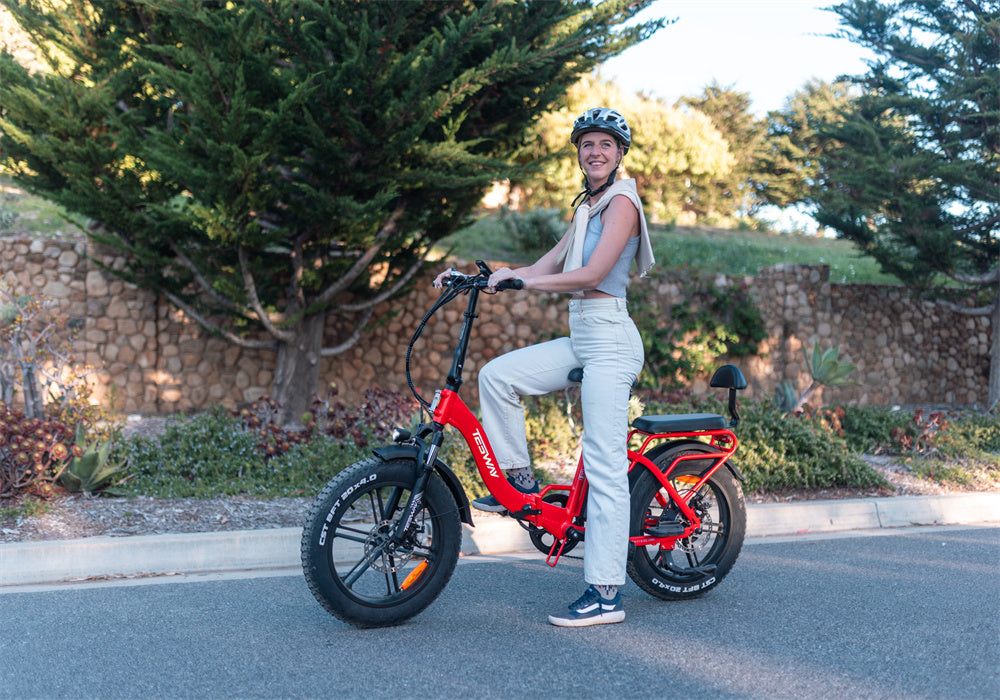Do all eBikes use the same charger? The truth is, not all eledtric bikes use the same charger. Your electric bike charger has stopped working, and you're unsure which product to choose as a replacement. But this guide will help you to make an informed decision. Selecting the right charger is crucial to maintaining your eBike's performance and battery life.
At Tesway, we specialize in providing best ebike for the money and accessories, ensuring you have everything you need for a smooth and efficient ride.

Different Charger Categories on the Market
Standard Chargers
These are the most common chargers, designed to charge electric bike batteries at a moderate pace. They are ideal for daily use and ensure the battery is charged safely.
Fast Chargers
As the name suggests, fast chargers reduce the charging time significantly. They are perfect for those who need a quick turnaround but should be used sparingly to avoid potential battery degradation over time.
Smart Chargers
Equipped with advanced technology, smart chargers can automatically adjust the charging rate based on the battery's condition. They help in extending the battery's lifespan by preventing overcharging and overheating.
Portable Chargers
These are compact and lightweight, making them ideal for on-the-go charging. Portable chargers are convenient for long rides where you might need to recharge your electric bike battery away from home.
SEE ALSO : Never Run Out of Juice: Top Spots to Charge Your E-bike on the Go
What Electric Bike Charger Do I Need
Voltage
The charger voltage must match your electric bicycle battery's voltage. Using a charger with a different voltage can damage the battery and reduce its lifespan. Most electric bike batteries come in 36V, 48V, and 52V, so ensure your charger matches the voltage requirement of your battery.
24V or 29.4V: Indicates a 24-volt charger.
28.8V or 33.6V: Indicates a 28.8-volt charger.
36V or 42V: Indicates a 36-volt charger.
48V or 54.6V: Indicates a 48-volt charger.
Different Types Of Connectors
Chargers come with different types of connectors. Common connector types include:
DC Barrel Plug
The DC Barrel Plug is widely used in many eletric bicycles. It features a cylindrical shape and provides a stable connection. This type of plug is commonly found in mid-range eletric bicycles and is known for its ease of use and reliability.
XLR Connector
The XLR Connector is known for its durability and secure connection. Originally used in audio equipment, this connector has found its way into eletric bicycle charging due to its robust design. It typically has three or more pins, making it particularly favored for high-end electric bikes and applications where a strong, reliable connection is necessary to handle higher currents without risk of disconnection.
Anderson Powerpole
Popular in high-power electric bikes, the Anderson Powerpole connector is renowned for its reliable connection. This connector often has two or more pins and is used in situations where a robust, high-current connection is required.
Phylion or Kalkhoff Specific Connectors
Some eletric bicycles, like those from Phylion or Kalkhoff, require specific connectors. These communicating chargers often have discharge pins that match the battery design, ensuring compatibility and efficient charging.
How Many Watts Does an E-bike Need to Charge
The wattage required to charge an eBike battery depends on the battery's capacity (measured in amp-hours, Ah) and voltage (V).
For example, if you have a 48V battery with a capacity of 10Ah, the required wattage would be:
Using a charger with the appropriate wattage ensures optimal charging times and maintains battery health. It is important to note that the charger should match or slightly exceed the wattage calculated to ensure efficient charging without overloading the battery.
Charging eBike Tips
Proper charging practices can extend the life of your electric bike battery and ensure it performs optimally. Here are some essential tips:
Use the Right Charger
Always use a charger recommended by your eBike manufacturer. Using incompatible chargers can damage the battery and void the warranty.
Avoid Overcharging
Disconnect the charger once the battery is fully charged. Overcharging can lead to overheating and reduce the battery's lifespan.
Charge in a Cool Environment
Avoid charging your electric bike battery in extreme temperatures. Charge in a cool, dry place to prevent overheating and damage.
Regular Maintenance
Keep the charger and battery contacts clean. Regularly inspect them for any signs of damage or wear.
Partial Charging
It’s not always necessary to fully charge your battery every time. Partial charging can help in prolonging the battery’s lifespan.
Store Properly
If you’re not using your E-bike for an extended period, store the battery at a 50% charge. This helps in maintaining the battery’s health during long storage periods.
Conclusion
Choosing the right electric bike charger is crucial for maintaining the performance and longevity of your electric bike. At Tesway, we are committed to providing the best eBike solutions tailored to your needs. Explore our range of high-quality E-bikes and accessories to enhance your riding experience.
FAQs
Can I use a fast charger for my E-bike?
Yes, but fast chargers should be used occasionally to prevent battery degradation over time.
What should I do if my electric bike battery gets hot while charging?
Stop charging immediately, let the battery cool down, and ensure you are using the correct charger in a cool environment.
How often should I charge my E-bike battery?
Charge your eBike battery after every ride or when the battery level drops below 20-30%. Avoid letting the battery completely discharge.










Share:
Pogačar Dominates Stage 4 to Reclaim Yellow Jersey at Tour de France
Electric Bike Battery: How Long to Charge & Last